Tomato Seed Production: Quick Reference - Organic Seed Alliance
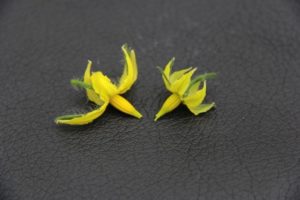
Tomato Seed Production
Tomato plant spacing is affected by the growth habit of the variety. The three main growth habits are:
| Plant spacing | |||
| Growth habit | Description | Between row | In row |
| Indeterminate | At least 3 leaves between 2 adjacent inflorescences on the same branch | 48-72″ | 24-36″ |
| Determinate | One or two leaves between 2 adjacent inflorescences on the same branch | 36-72″ | 14-24″, staked |
| Determinate compact | Concentrated set for processing | 36-72″ | 14-24″, staked |
Tomatoes like humid, warm to hot summers. Pollination and seed formation favor temperatures between 80-90°F. Tomatoes prefer sandy to clay loams that are well drained with high fertility for nitrogen, phosphorus, potassium, calcium, and magnesium. Soils need to have a high water-holding capacity, but overhead irrigation can cause disease spread and should be avoided when cultivating tomatoes. Tomatoes have perfect, self-fertile flowers. They are primarily self-pollinating, but can outcross depending on several factors. Solanum lycopersicum and Solanum pimpinellifolium (currant tomato) will cross-pollinate. Nearly all lycopersicum tomato varieties developed after 1950 are self- pollinating due to their flower structure (the stigma and style are enclosed by a fused anther cone). Some heirloom varieties produce flowers with exerted styles or protruding stigmas, which facilitate a higher occurrence of outcrossing and cross-pollination.
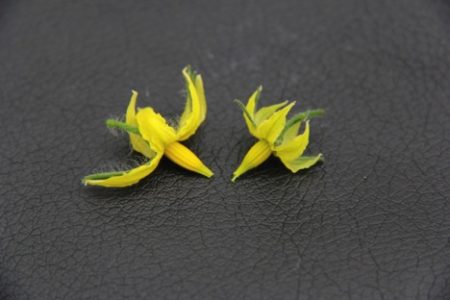
A tomato flower with an exerted style or protruding stigma may have an increased chance of cross- pollinating, but outcrossing will depend on other factors such as insect pollinator availability. In addition, long days, high temperatures, or low humidity can cause the style to elongate and favor cross- pollination. Besides flower structure, the types of bees present and their behavior on the blossoms, isolation distance from other tomatoes, the presence of barrier plants, and the planting pattern (rows vs. blocks) can affect the amount of outcrossing. The only way to know how much outcrossing is to grow different varieties together and regrow the seeds from them the following year.
To prevent outcrossing, tomatoes with an extruded style should be planted 75 feet from another variety. Tomatoes should be transplanted from the greenhouse to outdoors after being hardened off at temperatures no less than 55°F. Any plants with disease should be discarded. For uniform varieties, very few plants are needed to maintain the variety (as few as 5). For landraces with a lot of genetic variability, at least 20 plants should be grown to maintain the variety.
Some tomato varieties are parthenocarpic, meaning they have the ability to set fruit without pollination and fertilization. While this is an extremely valuable trait for producing tomatoes in cooler climates, it can present a frustrating challenge for seed producers. Generally the earliest fruits will have little to no seeds, and as the season progresses and both day and nighttime temperatures rise, pollination and fertilization will be increasingly successful and seeds will begin to appear in the fruits. If a variety is known to be parthenocarpic, planting a bit later than normal, so that fruit is developing when temperatures are consistently warm, may aid seed production. If a variety’s parthenocarpy is not known and the earliest fruits have little to no seeds in them, the variety is likely parthenocarpic and will produce seeds in later maturing fruits.
Before seed harvest, the tomatoes should be “dead ripe” but not over-ripe to the point of rotting. The seed should be extracted as soon as possible after harvest. Mash the fruits in appropriate sized containers — anywhere from small (pint) jars to 5 gallon buckets. Add water only if pulp mash it too thick to stir. Ferment the pulp mash for 2-3 days at 70-85°F.
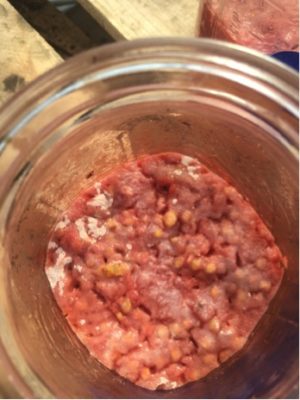
After fermentation is complete, add water and stir to help separate the pulp and seeds, pour off the pulp and light seed (decanting). Repeat decanting until only clean seed is left and all pulp has been poured off. Rinse clean seed through a strainer and spread out on a screen for drying.
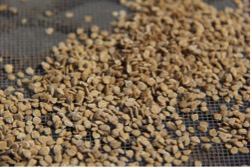
Seed dried to 5.5% or less moisture can be stored for 3-7 years under favorable conditions of 40-60°F and 40%RH or less.
Selection and Variety Improvement
Since tomatoes are primarily self-pollinating, selection for most characteristics should occur after the fruit has matured. Leaf shape and plant stature traits can be selected prior to fruiting.
| Trait | Timing |
| Soil emergence | After planting |
| Seedling vigor | After planting |
| Growth habit | At flowering |
| Maturity | Market harvest |
| Uniformity | Market harvest |
| Vine cover | Before flowering |
| Fruit type | Before fruit maturity |
| External fruit color at maturity | Market harvest |
| Internal fruit color at maturity | Market harvest |
| Fruit shape | Market harvest |
| Fruit firmness | Market harvest |
| Disease | Throughout season |
| Stem attachment | Market harvest |
| Stem scar | Market harvest |
| Blossom end | Market harvest |
| Fruit cracking | Market harvest |
| Fruit ripening | Market harvest |
| Fruit shoulders | Market harvest |
| Fruit smoothness | Market harvest |
| Fruit brix | Market harvest |
| Fruit weight | Market harvest |
| Fruit length | Market harvest |
| Fruit width | Market harvest |
| Fruit diameter | Market harvest |
| Fruit # per plant | Market harvest |
| Flavor | Market harvest |
Disease
Start with disease-free seed and/or reputable transplants. Avoid planting into fields with a history of seedborne diseases. Use crop rotations. Compost or plow under all plant residues. Clean field equipment thoroughly if it’s been used in fields suspected of disease. Avoid using tobacco products when handling seed or plants as humans can vector Tobacco Mosaic Virus. Plant early in the season to avoid later-season diseases such as late blight (unless resistance is a desired selection trait in which case plant to optimize disease pressure). Rogue out plants showing symptoms of disease. Only collect seed from healthy plants. Wash fruit before processing seed. Conduct phytosanitary field inspections and lab testing on seed lots if disease is suspected. Conduct hot water treatment on seed lots that are known to have disease. Diseases are classified by severity with a class of 1 being the most severe and 3 the least severe.
| Disease | Type | Severity class | Favorable conditions | Control measures |
| Anthracnose (Colletotrichum spp.) | Seedborne | 3 | Hot & humid | |
| Alfalfa mosaic virus (AMV) | Seedborne | 2 | Proximity to alfalfa fields | Hot water (25 min. at 122°F) |
| Bacterial spot (Xanthomonas campestris) | Seedborne | 1 | Cool & moist | |
| Early blight (Alternaria solani) | Seedborne | 2 | Hot & humid | Hot water (25 min. at 122°F) |
| Bacterial canker (Clavibacter michiganensis) | Seedborne | 1 | Cool & moist | Hot water (25 min. at 122°F) |
| Stem rot/canker (Didymella lycopersici) | Seedborne | 3 | Poor soil drainage | Hot water (25 min. at 122°F) |
| Leaf mold (Fulvia fulva) | Seedborne | 3 | High humidity (>85% RH), wide temperature range 50-90°F | |
| Fusarium wilt (Fusarium oxysporum) | Seedborne | 2 | Hot & humid | Hot water (25 min. at 122°F) |
| Phytopthora diseases (Phytopthora capsici) | Seedborne | 3 | Poorly drained, compacted soils | Hot water (25 min. at 122°F) |
| Bacterial wilt (Pseudomonas solanacearum) | Seedborne | 3 | Hot & humid | |
| Bacterial speck (Pseudomonas syringae) | Seedborne | 1 | Cool & moist | |
| Syringae leaf spot (Pseudomonas syringae) | Seedborne | 2 | Cool & moist | Hot water (25 min. at 122°F) |
| Tobacco mosaic virus (TMV) | Seedborne | 2 | Warm & moist | |
| Tomato mosaic virus (ToMV) | Seedborne | 2 | Warm & moist | |
| Late blight | Foliar | |||
| Septoria leaf spot | Foliar | |||
| Cucumber mosaic virus | Foliar | |||
| Curly top (Western yellow blight) | Foliar | |||
| Root knot nematodes | Insect | |||
| Blossom end rot | Calcium deficiency | |||
| Cracking fruit | Physiological | |||
| Catfacing | Physiological | |||
| Leafroll | Physiological | |||
| Poor fruit set | Physiological |
This resource was made possible thanks to the Montana Department of Agriculture’s Specialty Crop Block Grant Program.

